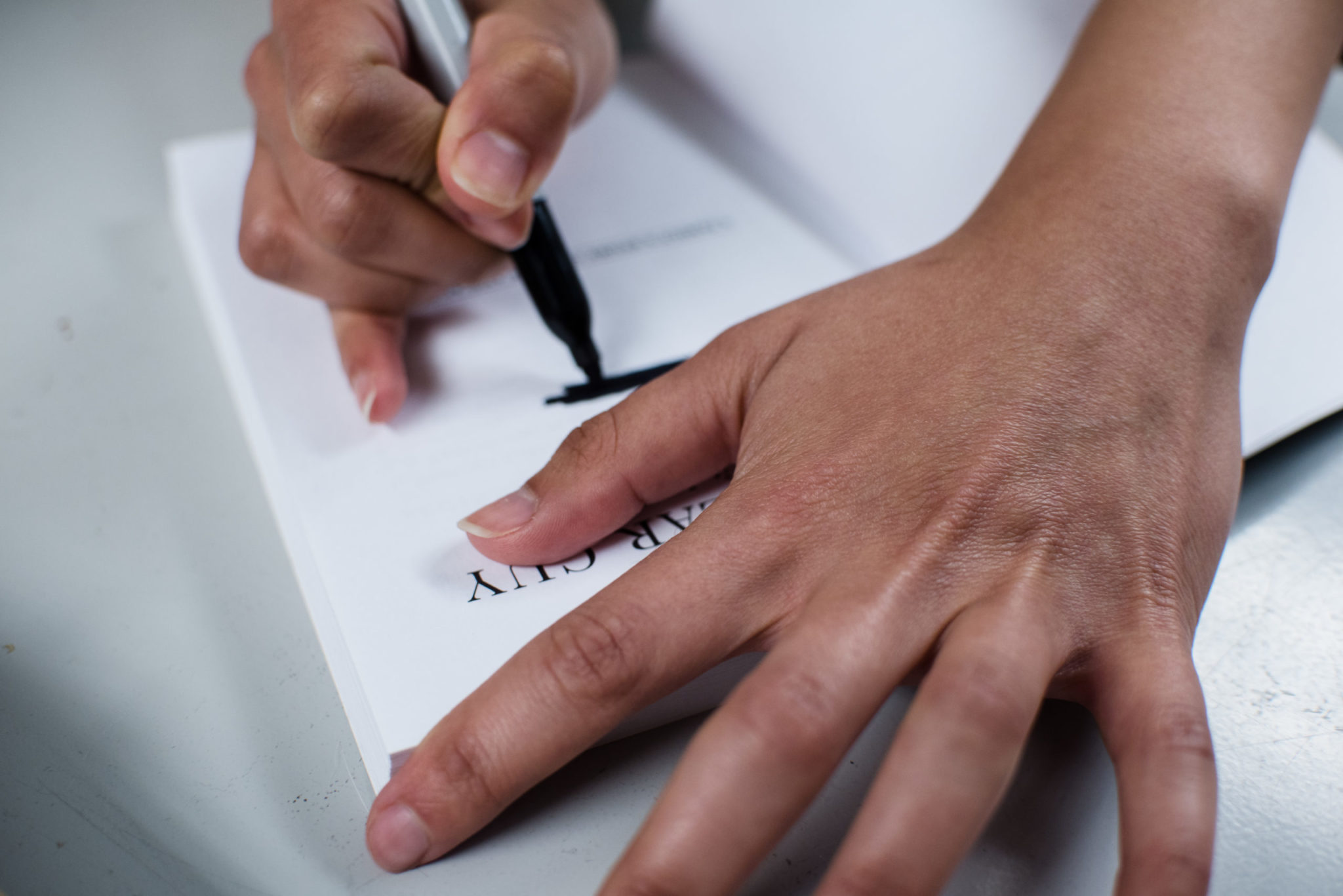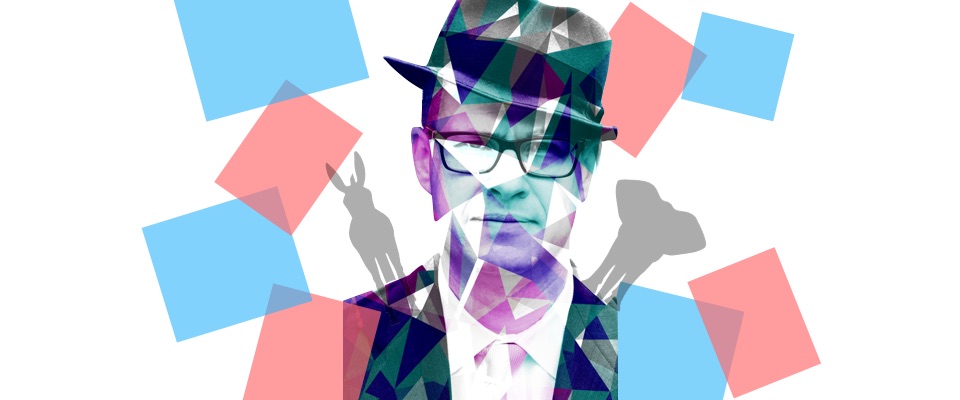The year was 1986, and Barbara Feinman Todd was a writer in disguise. Her mission? To crash a party— the 45th wedding anniversary of the director of the CIA, being held at the Watergate Hotel in Washington, D.C. No press was allowed, but it was her job to find out who the guests were.
Clad in a black velvet cocktail dress and armed with a notebook hidden inside her clutch, the 26-year-old slipped past the Secret Service agents. Once in the party, she scurried back and forth from ballroom to bathroom, where she wrote down the names of the Washington insiders in attendance—including Henry Kissinger and the U.S. Attorney General.
Feinman Todd’s party crashing was at the behest of her boss, investigative journalist Bob Woodward. He needed that guest list for Veil: The Secret Wars of the CIA, 1981–1987, and Feinman Todd was his full-time researcher.
Feinman Todd describes that nerve-wracking night and the years that followed in her new memoir, published in February 2017. She didn’t know it then, but her collaboration with Woodward set her on the path to becoming one of Washington’s preeminent ghostwriters, crafting memoirs for the likes of Palestinian activist Hanan Ashrawi, one-time Republican presidential candidate Morry Taylor, and then-First Lady Hillary Clinton. The memoir’s title is what she would tell her subjects to put them at ease: Pretend I’m Not Here.
The account of Feinman Todd’s career as an invisible “literary midwife” left me wondering about the experiences of other ghosts, especially in our increasingly Internet-oriented world. The fascinating, funny, but ultimately bleak memoir made me want to know: Are all ghostwriters haunted by their work? I decided to find out and ventured into ghostland, starting with Feinman Todd herself.

The first thing I learned was that most people don’t plan on being ghostwriters—they fall into it, often from careers in journalism, publishing, or other adjacent industries. Feinman Todd, for example, wanted to be a writer. After graduating from Cal in 1982 with a degree in creative writing, she moved to Washington, D.C. and started working as a copy aide at The Washington Post. That’s where she met Woodward, who later hired her to work on Veil.
Through the D.C. grapevine she steadily picked up more work, helping Post icons Carl Bernstein (Woodward’s Watergate reporting partner) and Ben Bradlee (the paper’s longtime executive editor) with research and legwork for their memoirs. After that, she graduated to full-on ghostwriting projects, for which she would draft entire manuscripts in someone else’s voice, a process that first required close study of the client’s mannerisms and way of speaking. “For me, taking on a ghosting gig was like getting that person’s kidney—or maybe their heart—transplanted into my body … My experience was that the act of writing in the voice of others, in addition to being taken away from my own writing, meant that I was being taken away from myself.”
On the phone, as on the page, Feinman Todd comes across as thoughtful and unpretentious—exactly the sort of person to whom you’d spill your life secrets in the hope of crafting a best-selling memoir. So why now has she opted to tell her own life story? “I had a compulsion to do this, in fact, because I feel like I’ve been erased, and I feel like I’ve made some mistakes,” she says. “I really felt that by being honest, I might be able to give a little guidance to other people.”
Feinman Todd gave up ghostwriting entirely about a decade ago, disillusioned with a career that she came to think of as “an exercise in ventriloquism.” Returning to her roots, she now heads the journalism program at Georgetown University, where she has taught full-time since 2002.
Judy Katz ’63, on the other hand, left a successful career in public relations to start ghostwriting about 12 years ago. Katz says that life as a literary chameleon suits her, allowing her to become a new person with every project. She isn’t bothered by the anonymity. “People let me into their hearts and minds,” she says of her clients. “It’s very soulful, it really is.”
Given that she charges between $50,000 and $100,000 per book, taking an average of six months to complete, it’s also very lucrative. Katz isn’t shy about this fact, or that her fees are on the high end of the industry standard. It’s all part of her guiding principle: Never sell yourself short. It’s an approach that has served her well. Today Katz is 76 years old with 42 books under her belt and no plans to retire. She runs Ghostbooksters, a full-service ghostwriting firm in New York that also offers publishing and PR services. One of her current projects is a memoir for a Holocaust survivor. This, she explains to me, is the sort of book that could take well over a year to complete due to translation and research requirements.
Katz has witnessed a technological revolution over the course of her career and points out that, for ghostwriters, the rise of self-publishing in the last decade has had a tremendous impact. As publishers offer fewer large advances (and fewer advances for first-time authors in general), clients who hire ghostwriters are increasingly likely to self-publish their book or seek out a company like Ghostbooksters, which offers nearly the same services as a traditional publisher without the attendant hurdles, such as requiring a book proposal. Also, the process is expedited. “Within a few months, they have a book that is now changing their business or their reputation, as opposed to waiting the full two years that it traditionally takes,” Katz says.
I was surprised to hear Katz and other ghosts praise self-publishing, which I assumed produced only dubious ebooks promising the likes of “The Miracle Vitamin Cure!” or “Six Months to a Six-Figure Life.” Apparently I was off base—sort of. “I find self-publishing a wonderful thing,” says Katz. “That said, it’s too easy for bad books to get out there. Anyone can put a slice of ham between two pieces of bread and call it a book.”
Self-publishing isn’t the only recent technological change for ghostwriters. Marcia Layton Turner, a ghostwriter specializing in business writing, points to a “ravenous demand” for online content—blog posts, marketing materials, articles—that has expanded the realm of ghostwriting far beyond books.
Case in point: Today you can hire a ghostwriter to use Twitter on your behalf. Melissa Fall ’08 was one such ghost-tweeter (she was also once a California intern), and she promised to share her “boo-dacious experiences” with me. (No one, I came to learn, likes a ghost pun more than a ghostwriter.) “There was something exciting about being someone else, to step into this other person for 140 characters and see what happened,” she says.
“I wanted to reembody ‘Barbara,’ even though, by this point, I’d been involved with so many other people’s voices, I wasn’t exactly sure who ‘Barbara’ was at times.”
Fall says she treated her time as a ghost-tweeter as a creative exercise, which makes sense given that she’s also a playwright. She continued to pursue her own creative projects on the side while tweeting for other people, which kept her grounded even as she dealt with difficult clients—like the one whose politics were not aligned with her own, a situation Fall called “Tony Schwartz territory.”
Schwartz is the journalist who ghostwrote Donald Trump’s best-selling 1987 memoir, The Art of the Deal. Now, by all accounts, he lives to regret his involvement with the project and worked actively against Trump’s election, even donating his 2016 royalties from the book to charities such as the National Immigration Law Center and Human Rights Watch. In a recent New Yorker profile, Schwartz said that he would like to retitle the book The Sociopath.
In his own memoir, What Really Matters, Schwartz describes the same writerly whiplash as other ghosts: “I’d spent two years seeing the world through Trump’s eyes, and I’d grown accustomed to cramming my days full of action and activity.” Feinman Todd similarly describes the aftermath of many months spent on a manuscript of Hillary Clinton’s It Takes a Village.
“I was in the process of trying to forget all the First Lady’s speech patterns and favorite turns of phrase and various sensitivities,” she writes. “I wanted to reembody ‘Barbara,’ even though, by this point, I’d been involved with so many other people’s voices, I wasn’t exactly sure who ‘Barbara’ was at times.”
Feinman Todd received no acknowledgment for her work on Village, a fact the press quickly picked up on. She soon found herself at the center of a minor media scandal, dubbed “ThankYouGate”—and she wanted no part of it. “Perversely, I was getting more offers than ever to write people’s books,” she writes. “Rising stock notwithstanding, it was mentally debilitating. It felt like I was a pawn in a game of everyone versus Hillary Clinton.”
For both Schwartz and Feinman Todd, the process of re-inhabiting their own identities was fraught. In his book, Schwartz concludes, “I wanted not just recognition, but respect.”
Historically, respect for ghostwriters has been hard to come by. The first known use of ghostwriter in English dates to 1927, but the practice itself was common in the United States starting with speechwriting for presidents—a niche that boasts ghosts ranging from James Madison, who drafted George Washington’s Farewell Address, to John Steinbeck, who tried his hand at writing for Lyndon B. Johnson. Common as it may be, the ghostwriting profession has nearly always been shrouded in some degree of stigma and secrecy. In French, the word for the profession, nègre, is also racially pejorative, signaling its lowly status. Feinman Todd recalls one book editor calling ghostwriters “basically typists.”
“Ghosts,” she writes, “were to be spirited away, ignored, treated with disdain.” Some of this disdain might have been a product of the time, or perhaps was specific to Washington’s literary climate—a place where, as Feinman Todd explains, people “rarely write books because the writing muse visits them; rather, they have a campaign to win, a cause to lobby for, a scandal to overcome, or an image to fix.”
The other ghostwriters I spoke to noted that the stigma of their profession has all but fallen away, especially in the last few years. “I think,” says Layton Turner, “there’s been a shift from shame to pride” both in being and using a ghostwriter.
I had initially contacted Layton Turner, founder of the Association of Ghostwriters, to ask her about the gender breakdown of the field, which seemed to skew heavily female (the ghosts quoted in this piece are no exception). In Pretend I’m Not Here, Feinman Todd surmises that the preponderance of women has to do with empathy, a necessary skill for ghosts and one that is “typically encouraged more in girls than boys.” No one I spoke to could offer hard numbers, but Layton Turner agreed that it wouldn’t surprise her if more women than men were drawn to the field, whether due to temperament factors or lifestyle ones, like the fact that a freelance schedule can be desirable for working mothers.
There’s also the matter of money—which can appeal to anyone. “In most cases, it’s pretty lucrative,” Layton Turner says. “So that’s the draw.” She says that modern ghostwriting has also come to be seen as a reflection of a ghostee’s financial resources—a marker of high status rather than inadequacy.
Ghostees may be passionate about what they do but lack the time or the skill to write about it. Consider the clients of Michelle Konstantinovsky, M.A. ’13, a J-School alum who specializes in health and wellness, both reporting and ghostwriting. “A lot of the people I work with are gifted and brilliant in their field. They’re brilliant doctors or health specialists of some kind; they’re experts in whatever they do,” she says. “I think it’s impractical to expect them to also be expert communicators.”
According to Fall, that expectation is also naïve. “It’s like going to a celebrity chef’s restaurant and thinking Bobby Flay is cooking your steak. You know, he’s not.”
A skilled ghostwriter, then, does the work of convincing the world that their celebrity chef is, in fact, in the kitchen—a task they all agreed goes beyond simply mastering the mechanics of someone else’s speech. “I think in order to communicate someone’s message, you need to understand where they’re coming from,” Konstantinovsky says. “That goes beyond the words they’re telling you. It’s really a sense of their story.”






















